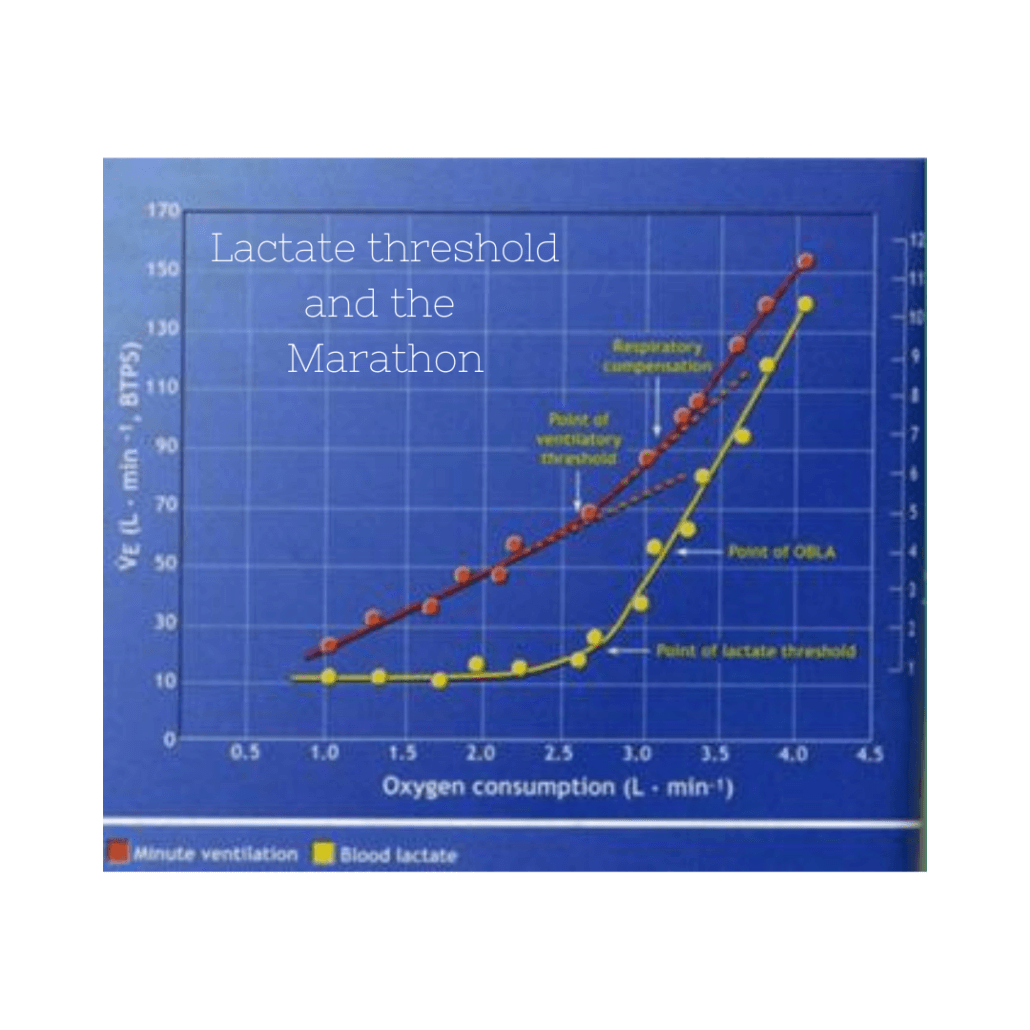A fresh look at easy runs: regenerative vs moderate

Podcast: Play in new window | Download
It seems like all easy running is the same, and I was in the camp of indifference for a long time, I grew to realize that as we advance in ability, how we approach our easy runs will change with the circumstance.
I’ll be honest, I know what I want to convey in this post, but I am struggling with how to present it, or at least get the conversation started. So, let’s start with a common scenario that I see.
- The runner finishes a training segment and takes some down time. They come back and the first several runs are really easy. This typically lasts a week or two.
- The runner gets into a groove and as mileage builds, so does the pace of their runs. During this time, there are either no workouts or very light workouts.
- Runner builds into full training and easy run paces stay the same as workouts increase in frequency and volume.
- Training gets real. Cumulative fatigue begins to take hold, but runner gets frustrated because they are really forcing themselves to maintain a moderate run pace, despite being in the heaviest amount of training.
Does that sound familiar to anyone? It sure does me! What happens is we start off with our easy runs being the primary basis of our fitness, but we don’t allow our change in priorities to dictate how hard we run on our easy runs. In other words, we are saying our east runs are there for the same reason during weeks 12-17 as they are for weeks 1-11. They aren’t, and that’s what I want to explain.
When easy runs are discussed, there are a lot of terms thrown around about defining a truly easy run. You may see it defined as 2.0 mmol of blood lactate, 60% of heart rate max, Zone 1-2, or an increase in lactic acid. In short, these are all centered around the idea of a person running around their aerobic threshold.
When a person is just starting out running, these all occur at pretty low levels of running. Just getting out and jogging will probably cause you to reach these levels. The theory surrounding this is nice- that as you become fitter, you will naturally run faster at the same markers. For example, when you started, your pace at 60% HRmax was 9:30 per mile, maybe at the same percentage it is now 9:00. This is all pretty true, however, there are a couple of things I see with this camp that I don’t necessarily agree with. The first, is that do we continue to get the benefits from those runs all the time? Is that the staple of how our fitness is gained months and years later? I don’t think it is. I think this type of running is great for general fitness or endurance, but from a performance standpoint, I think doing this type of running all the time for my easy days will limit my aerobic growth. Secondly, I think that this type of running would shift from being my aerobic development driver to my recovery during hard training. This is probably where I would differ from other coaches who work with recreational type runners. We tend to run a lot more miles than those other plans, so we have enough maneuverability to have different types of easy runs that serve different purposes.
When a person follows one of my plans, they will see easy to moderate, moderate to long run pace, and to a lesser extent, recovery paces when talking about runs normally referred to as the easy runs. If you are a zone person that’s going to include runs anywhere from what you would say zone 1 and zone 2. However, from my experience these aren’t necessarily cut and dry and I feel like there is some overlap between these zones. As much as they say that these eliminate “grey zone” training, I say that these create their own grey zones, but that’s another discussion for another time. If you read some more older school coaches, you’ll often just hear the terms regenerative, easy, aerobic, or even something like steady.
What I want to get into a bit today revolves around the intermediate and above runners. Someone who’s been doing this a while and wants to continue to take it to the next level. This all comes down to easy runs that are helping you recover (regenerative) and those that are going to help push your aerobic fitness higher. The question is, what to do and when?
The best way to approach this is probably looking at a schedule in the idea of blocks of schedule. Let’s take it from after downtime following a race. These next 2-4 weeks would be in the regenerative category. We aren’t looking to gain fitness, but rather just get our legs back underneath us, make sure we are still ok and just get back into the routine of running consistently again. These are going to be shorter runs with no real motive, other than enjoying the time exercising. If you are following an HMM plan, particularly the beginner plan, this would be those first several weeks. If following the advanced plan, this time is much shorter and would probably be done before you actually started the plan up through the first week of the plan. One thing I’d consider is that your first few runs are probably going to be the slowest, but as you get back into it, the paces will naturally increase. For an experienced runner, this segment shouldn’t be too long, unless there is a specific reason for it.
Now, as we move out of this segment, let’s assume we are ramping up for another marathon. Again, if following an HMM plan you would move into the speed segment. Now the number of easy runs will go down and will be replaced with speed, tempo, and long runs. For a number of weeks, there will be easy runs that stress the upper limits of the range. Some of these runs should really stress the moderate side of that easy range in order to continue to develop the aerobic system.
For example, let’s look at the basic setup of weeks 6 and 7 of both HMM beginner and advanced plans.
| Week | Monday | Tuesday | Weds | Thurs | Friday | Sat | Sun |
|---|---|---|---|---|---|---|---|
| Week 6 | Easy | Speed | Off | Tempo | Easy | Easy | Easy |
| Week 7 | Easy | Speed | Off | Tempo | Easy | Easy | Long |
| Week | Monday | Tuesday | Weds | Thurs | Friday | Sat | Sun |
|---|---|---|---|---|---|---|---|
| Week 6 | Regen | Speed | Off | Tempo | Regen | E/Mod | Mod |
| Week 7 | E/Mod | Speed | Off | Tempo | Regen | E/Mod | Long |
As you may know, this is fairly early into the training. Still not quite halfway through. We are at a time when things shouldn’t be in that “cumulative fatigue” state, but we are fully aware that we are in training. Let’s look at how’d navigate some of this. First, to end week 5, we are coming off a long run that put some fatigue on it. In that case, the Monday following (the Monday of week 6) should be a regenerative run. We just spent the day before putting a big aerobic effort in and the long run causes fatigue. So Monday should be a time to recover by not pushing the pace- keeping things light. This will actually allow the long run to give us those adaptations we are looking for because remember that stress + rest = growth. If we run the long run and then push the pace on that easy run, we don’t recover as much as we should and then that also means that over time, we never get ourselves out of that hole and each following workout is less and less effective.
Ok, so we recover on Monday, then turn around and do speed on Tuesday. Wednesday is off, so choose an activity wisely. Thursday is tempo, another big effort. Now that means that Friday should be a regenerative effort for the same reasons we already discussed. If done right, that means you can come back on Saturday and Sunday to put in bigger back-to-back moderate days that will stress that aerobic development in ways that those low-intensity regenerative runs won’t. We can recover but still push our aerobic development.
Then you come back to Monday, which is usually shorter. Depending on the person, if can be considered a regenerative or moderate run. For beginners, I’d probably say keep regenerative. More advanced, play it by how you are feeling. Then we go through that same cycle through Friday. When we get to the actual long run weekends, what I might do would change depending on the runner. For those using the beginner plan, I’d say that your first goal is to just build endurance by focusing on completing the volume at an easy to moderate pace. The volume alone will provide enough aerobic stress and development that pace would be secondary. For the more advanced runners, I’d say that the Saturday run should be easy to moderate, but then the Sunday run is one I really like getting after it (within reason) to not only run long, but run long with some intent on the pace. I might start out easy and work towards being within 30 seconds of my marathon pace, averaging maybe 45-60 seconds/mile slower than my goal marathon pace for the long run entirety. The key is that the next day if I averaged 7 mins/mile for my long run, my 4-6 miles the next day is going to be 8 mins a mile. So as you can see, we aren’t abandoning one for the other, just using strategically to balance recovery and building that aerobic engine foundation.
| Monday | Tues | Weds | Thurs | Friday | Sat | Sunday | |
| Week 12 | Easy | Strength | Off | Tempo | Easy | Easy 10 | Easy 10 |
| Week 13 | Easy | Strength | Off | Tempo | Easy | Easy | Long |
| Monday | Tues | Weds | Thurs | Friday | Sat | Sunday | |
| Week 12 | Regen | Strength | Off | Tempo | Regen | Easy | Moderate |
| Week 13 | E/Mod | Strength | Off | Tempo | Regen | E/Mod | Mod/Long |
Next, as we move out of the speed and into the strength portion. At this point, between the strength, the tempo, and the longest long runs, we are putting a major emphasis on moderate and faster paces. This is already a major chunk of the weekly volume and by now fatigue has begun to set in. So at this point, if we are around marathon pace for 14-16 miles a week, plus running a long run at a moderate clip, that’s three runs left and they are all surrounding our biggest workouts. The thing you should take from this is that most of the development we’d get from our easier volume has taken place. Now it is time to finish the training from the workouts and let the easy runs serve as the recovery between the workouts. I think that’s where a lot of people ultimately struggle toward the end. They feel like their easy runs are slowing down so they either, get caught up in that mentally. Two, they try to force the issue on the easy days to hit those early season paces. Or three, both and they ultimately fry themselves out that last few weeks.
What I want you to take from this is a few things. The first is that just running incredibly easy runs will take you so far. For the lower level runner, they should be engaged in this, 100%. Start with the lowest fruit that’s going to give you massive improvements. But as time goes on and your fitness improves over the months to years, the role of the easy run will shift in terms of how hard and when to go faster vs easier. Keep the focus on where you are at with training and what is important at that time. If you can do that, you can let the volume work for you and you aren’t fixated on making sure your easy pace is the same, or faster, than what it was during the early build up.




